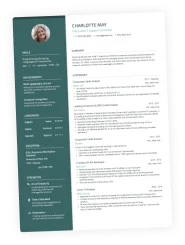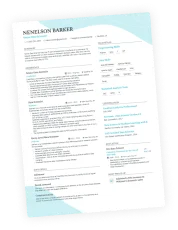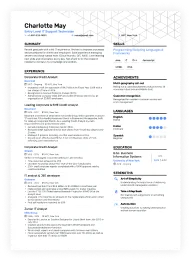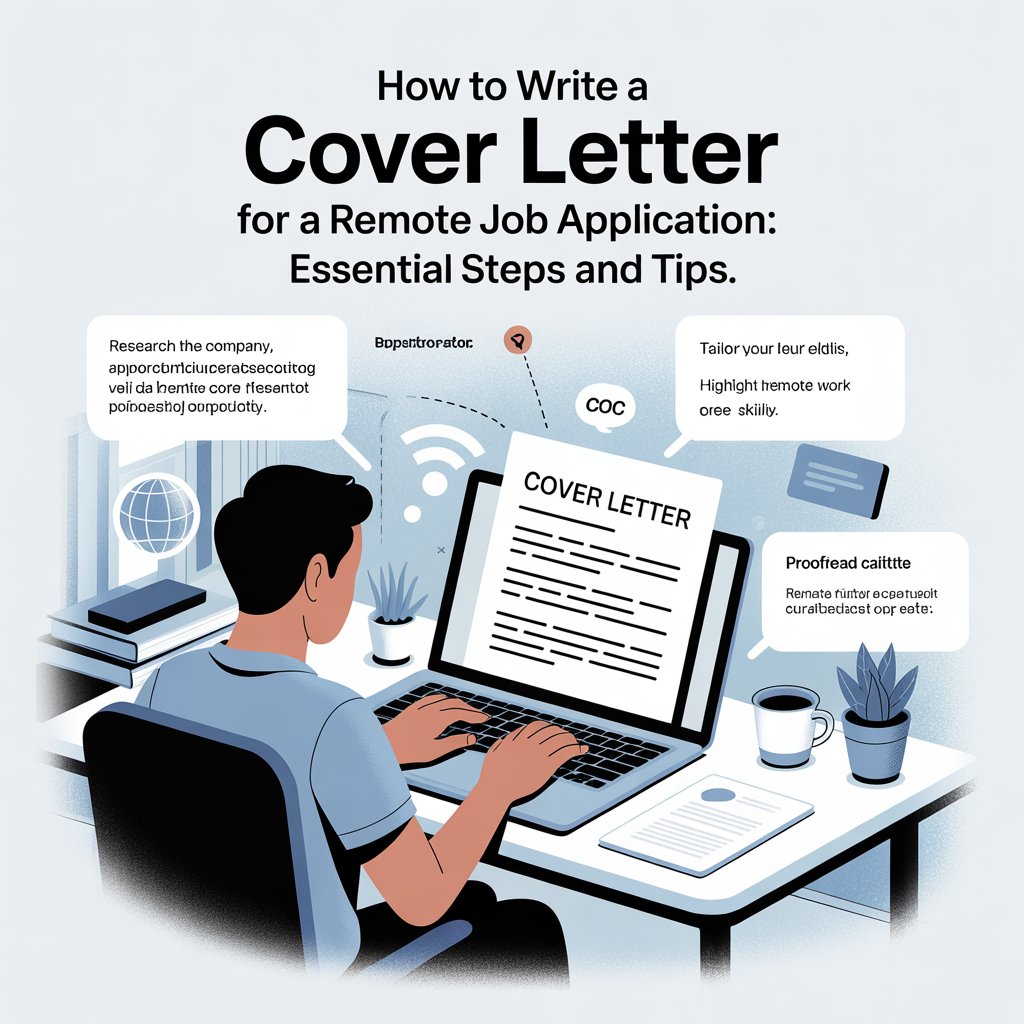In a world where first impressions matter more than ever, a cover letter video can set you apart from the crowd. This modern twist on traditional job applications allows you to showcase not just your qualifications, but also your personality. Employers often appreciate the extra effort, and a well-crafted video can be the key to landing that coveted interview. So, if you’re ready to take your job application to the next level, let’s dive into how to create a standout cover letter video that will impress potential employers.
Key Takeaways
- A cover letter video helps you show your personality and creativity.
- Keep your script focused and engaging to hold the viewer’s attention.
- Choose a clean, professional setting with good lighting for your video.
- Practice your delivery to ensure you come across clearly and confidently.
- Gather feedback from trusted friends or colleagues to improve your video before submitting it.
Understanding The Importance Of A Cover Letter Video

Why A Video Can Enhance Your Application
Okay, so you’re probably thinking, "A video? For a cover letter?" Yeah, it sounds like extra work, but hear me out. In today’s job market, you’re competing with a ton of other people. A regular cover letter can easily get lost in the pile. A video cover letter is a way to grab attention right away. It’s different, it’s memorable, and it shows you’re willing to go the extra mile. Think of it as your chance to make a first impression that sticks. It’s not just about reciting your resume; it’s about showing who you are.
The Impact Of Visual Communication
We’re visual creatures. We respond to faces, expressions, and movement. A video lets you communicate so much more than words on a page ever could. You can convey enthusiasm, confidence, and personality in a way that’s just not possible with text. It’s like bringing your resume to life. Plus, it shows you have skills beyond just writing – you can present yourself well on camera, which is a big plus in many jobs. It’s about making a connection, and visual communication is key to that. Consider it a modern way to submit cover letters.
How Videos Showcase Personality
This is where a video really shines. Your personality is what makes you, well, you! A video lets you show that off. Are you funny? Are you passionate? Are you a good communicator? All of these things come across so much better in a video than in a written letter. It’s your chance to let your true self shine through and show employers why you’re not just qualified, but also a great fit for their company culture. It’s about making them think, "I want to work with this person." It’s a chance to show off your unique qualities and make a lasting impression.
A video cover letter is a chance to show your personality and make a connection with potential employers. It’s a way to stand out from the crowd and demonstrate your communication skills in a memorable way. It’s not just about what you say, but how you say it, and a video lets you control that narrative.
Crafting A Compelling Script
Key Elements To Include
When you’re putting together your video cover letter, think of it as a short movie about you. Start with a strong opening – a quick introduction that grabs attention. Then, highlight your most relevant skills and experiences, tailoring them to the specific job. Don’t just list them; tell a story that shows how you’ve used those skills to achieve results. Finally, end with a clear call to action, expressing your enthusiasm and desire for an interview.
Writing For Engagement
Writing a script for a video is different than writing a resume. You’re not just conveying information; you’re trying to connect with someone. Keep your language conversational and avoid jargon. Use active voice and vary your sentence structure to keep the viewer engaged. Think about how your words will sound when spoken – practice reading your script aloud to identify any awkward phrasing. Remember, authenticity is key. Let your personality shine through! It’s important to express genuine enthusiasm for the role.
Memorization Techniques
Memorizing a script can be daunting, but it doesn’t have to be. Start by breaking your script into smaller, manageable chunks. Focus on understanding the key ideas rather than memorizing every word verbatim. Use techniques like repetition, association, and visualization to help you remember. Practice in front of a mirror or record yourself to identify areas where you need improvement. Don’t be afraid to use cue cards or a teleprompter as a backup, but try to maintain eye contact with the camera as much as possible. Remember, the goal is to sound natural and confident, not robotic. It is essential to avoid common mistakes to make a positive impression.
A good approach is to rehearse sections of your script repeatedly until they feel natural, then gradually combine these sections. This method helps in retaining information without sounding overly rehearsed. Focus on conveying the message authentically, rather than reciting words perfectly.
Here are some memorization techniques:
- Chunking: Break the script into smaller, more manageable sections.
- Association: Link key points to memorable images or stories.
- Repetition: Practice each section repeatedly until it feels natural.
Choosing The Right Setting And Background
Creating A Professional Environment
When it comes to your cover letter video, the setting speaks volumes. Think of it as your stage. You want it to say, "I’m professional and I take this seriously." A cluttered background can distract the viewer and undermine your message.
- Find a quiet space where you won’t be interrupted.
- Ensure the area is clean and organized.
- Consider using a dedicated home office or a simple, uncluttered room.
Lighting Considerations
Lighting is super important. Bad lighting can make even the best video look amateurish. Natural light is your friend, but it can be tricky to manage.
- Face a window for soft, natural light, but avoid direct sunlight.
- If using artificial light, ensure it’s diffused and doesn’t cast harsh shadows.
- Test your lighting setup before recording to avoid surprises. You can find more cover letter advice online.
Background Elements That Enhance Your Message
The background shouldn’t steal the show, but it can add to your story. Think about what you want to communicate about yourself. A few well-chosen items can make a big difference.
- Bookshelves can suggest intelligence and a love of learning.
- Plants can add a touch of warmth and personality.
- Avoid anything too distracting or controversial. Remember, you want the focus to be on you and your qualifications.
A simple, clean background is often the best choice. It keeps the focus on you and your message, without any unnecessary distractions. Think of it as a blank canvas that allows your personality to shine through.
Mastering Your Delivery
Body Language Tips
Body language speaks volumes, even on video. Maintain eye contact with the camera; it simulates a direct connection with the viewer. Avoid fidgeting or distracting movements. Sit up straight, and use natural hand gestures to emphasize points. Project confidence and enthusiasm through your posture and expressions. Remember, your body language should reinforce your message, not undermine it. It’s about presenting yourself as someone who is both capable and approachable. Think about how you present yourself in person, and try to translate that to the video format.
Vocal Techniques For Clarity
Clarity in speech is paramount. Speak at a moderate pace, enunciating each word clearly. Avoid mumbling or rushing through your sentences. Vary your tone to maintain engagement; a monotone delivery can quickly lose your audience. Project your voice so that you are easily heard, but avoid shouting. Practice modulating your pitch and volume to emphasize key points. Record yourself and listen back critically to identify areas for improvement. Consider doing some vocal warm-ups before recording to loosen up your vocal cords and improve your delivery. This is especially important if you’re not used to speaking on camera. A clear and engaging voice can make all the difference in how your message is received. Remember to breathe properly; it helps with both clarity and confidence.
Practicing Your Presentation
Practice makes perfect, especially when it comes to video cover letters. Rehearse your script multiple times until you are comfortable with the material. Don’t just read the script; internalize the content so you can deliver it naturally and conversationally. Record yourself practicing and review the footage to identify areas for improvement. Pay attention to your pacing, tone, and body language. Seek feedback from friends or colleagues to get an outside perspective. The goal is to appear confident and authentic, not robotic or rehearsed. Remember, the more you practice, the more comfortable you will be on camera, and the better your final product will be. Consider practicing in front of a mirror to get a better sense of how you look and sound. Also, make sure to time your presentation to ensure it falls within the recommended length. Aim for a concise and impactful delivery. Think of it as a performance; the more prepared you are, the better you will perform. Don’t be afraid to experiment with different approaches until you find what works best for you. A well-rehearsed presentation will showcase your professionalism and attention to detail. It shows that you care about the opportunity and are willing to put in the effort to make a strong impression. Consider using cover letter samples to help you prepare.
Practicing your presentation is not just about memorizing words; it’s about embodying the message and connecting with your audience. It’s about finding your own voice and letting your personality shine through. It’s about showing the employer who you are and why you’re the right fit for the job. It’s about making a lasting impression that sets you apart from the competition. It’s about turning a video cover letter into a powerful tool for career advancement. Remember, your delivery is just as important as the content itself. Mastering your delivery can significantly enhance your application.
Incorporating Visual Aids Effectively
Using Graphics And Text
Okay, so you’re making a video cover letter, right? Don’t just sit there and talk the whole time. That’s boring! Think about adding some visuals. I mean, it’s a video, after all. Throw in some text overlays to highlight key points. Maybe a graphic or two to show off your skills. But don’t go overboard. Keep it clean and professional. You want to impress them, not give them a headache. Think about it like this:
- Use text to emphasize your job title.
- Add graphics to show off your achievements.
- Keep the visuals consistent with your personal brand.
Balancing Visuals With Content
It’s a balancing act, really. You don’t want your visuals to overshadow what you’re saying. The focus should still be on you and your qualifications. The visuals are just there to support your message, not distract from it. Think of them as backup dancers, not the main act. If you’re talking about a project you worked on, show a quick clip or image. But don’t let it run for too long. Keep it moving. Keep it interesting. It’s all about finding that sweet spot where the visuals and the content work together in harmony. You want to make sure you have the right video editor cover letters.
Avoiding Overly Distracting Elements
Seriously, this is important. No flashing lights, no crazy transitions, no weird sound effects. Keep it simple. Keep it clean. You want the hiring manager to focus on what you’re saying, not on how fancy your video is. Overly distracting elements can make you look unprofessional and can even be annoying. Remember, you’re trying to make a good impression. So, ditch the distractions and focus on delivering a clear, concise, and compelling message.
Think of your video cover letter as a conversation. You wouldn’t wear a clown suit to a job interview, would you? So, don’t turn your video into a circus. Keep it professional, keep it focused, and keep it real.
Editing Your Cover Letter Video
So, you’ve shot your cover letter video. Now comes the part where you polish it up and make it shine. Editing can seem daunting, but with the right tools and a bit of patience, you can create a final product that really impresses potential employers. It’s about making sure your message is clear, concise, and visually appealing. Let’s get into the specifics.
Basic Editing Tools To Use
You don’t need fancy, expensive software to edit your video. There are plenty of user-friendly options available. Many computers come with basic video editing software already installed, like iMovie on Macs or Windows Movie Maker (though it might be a bit outdated now). For something a bit more robust, consider free options like DaVinci Resolve (free version), OpenShot, or HitFilm Express. These offer more features like color correction and advanced audio editing. The key is to find a tool you’re comfortable with and that meets your basic needs: trimming clips, adding transitions, and adjusting audio levels.
Adding Music And Effects
Music and effects can add a nice touch to your video, but use them sparingly. A subtle background track can make your video feel more professional, but avoid anything distracting or overpowering. Sites like YouTube Audio Library and Epidemic Sound offer royalty-free music. As for effects, simple transitions between clips are fine, but avoid flashy or cheesy effects. The goal is to enhance your message, not distract from it. Think about adding some visual aids effectively to help you stand out.
Ensuring High Quality
Quality is key. No matter how great your content is, a poorly edited video will make a bad impression. Here are a few things to keep in mind:
- Resolution: Aim for at least 720p (HD), but 1080p (Full HD) is preferable if possible. Check your camera settings before you start filming.
- Audio: Make sure your audio is clear and free of background noise. Use a microphone if possible, and consider noise reduction tools in your editing software.
- Transitions: Use smooth, professional-looking transitions between clips. Avoid abrupt cuts or overly complicated transitions.
- Color Correction: Adjust the colors in your video to make them look natural and appealing. Most editing software has basic color correction tools.
Remember, the goal is to create a video that is easy to watch and understand. A well-edited video shows that you pay attention to detail and are committed to presenting yourself in the best possible light. Don’t forget to tailor your video editor cover letter to the job description.
Gathering Feedback Before Submission
Before you send your cover letter video into the world, getting another set of eyes on it is a really smart move. You’ve put in the effort, so let’s make sure it shines!
Who To Ask For Input
Think strategically about who you ask for feedback. A good starting point is someone who knows you well and can speak to your strengths. This could be a former colleague, a mentor, or even a professor. They can tell you if the video truly reflects your personality and skills. Also, consider someone who works in the field you’re targeting. They’ll have a good sense of what employers are looking for and can offer insights on whether your video hits the mark. Don’t forget a friend or family member with a good eye for detail – they can catch any technical glitches or awkward moments you might have missed. You can even email us for a cover letter review!
How To Use Feedback Constructively
Okay, you’ve got feedback – now what? The key is to approach it with an open mind. Not all feedback will be gold, but even the stuff that stings a little can be helpful. Try to identify patterns. If multiple people say the same thing, it’s probably something you need to address. Don’t take it personally; view it as an opportunity to refine your video and make it even better. Thank people for their time and specific comments. It shows you value their input and makes them more likely to help you in the future. Remember, the goal is to create a video that impresses employers, and feedback is a tool to help you get there. It’s important to follow cover letter checklist to make sure you have everything covered.
Making Final Adjustments
After gathering and processing feedback, it’s time to make those final tweaks. This might involve re-recording certain sections, adjusting the lighting, or even completely re-editing the video. Don’t be afraid to make significant changes if necessary. Now is the time to ensure that your video is polished and professional. Before you finalize, watch the video one last time with fresh eyes. Check for any lingering errors or areas that could be improved. Once you’re satisfied, you’re ready to submit your standout cover letter video!
Common Mistakes To Avoid
Overloading With Information
It’s easy to want to cram every achievement and skill into your cover letter video, but resist the urge! Keep it concise and focused. Brevity is key. Recruiters are busy, and a long, rambling video is likely to lose their attention. Stick to the most relevant qualifications and experiences that directly address the job requirements. Think quality over quantity.
Neglecting Technical Quality
Nothing screams "unprofessional" like a poorly produced video. This includes bad lighting, shaky camera work, and muffled audio. Make sure your video is well-lit, stable, and has clear sound. Use a decent camera or smartphone, and consider investing in an external microphone for better audio quality. A visually and aurally appealing video shows that you care about the details and are willing to put in the effort. Don’t let technical issues distract from your message.
Failing To Tailor Content
A generic cover letter video is as bad as a generic written one. It shows that you haven’t taken the time to research the company and understand their specific needs. Tailor your video to each job you’re applying for. Mention specific skills or experiences that align with the job description, and demonstrate your knowledge of the company’s mission and values. This shows that you’re genuinely interested in the position and not just sending out a mass application. Remember to customize your approach for each opportunity.
A common pitfall is failing to proofread your script. Even a minor error can detract from your message. Before recording, meticulously review your script for any grammatical errors, typos, or awkward phrasing. Consider asking a friend or colleague to review it as well. A polished script demonstrates attention to detail and professionalism.
Here are some things to keep in mind:
- Don’t use too much jargon or slang.
- Avoid distracting backgrounds.
- Don’t just read a script, memorize it!
Examples Of Successful Cover Letter Videos
Analyzing Effective Videos
When looking at successful cover letter videos, it’s important to consider what makes them work. A common thread is a clear, concise message delivered with authenticity. These videos often highlight the applicant’s personality and passion for the role, something that’s harder to convey in a traditional written format. They also tend to be well-produced, with good lighting and sound quality, showing the applicant’s attention to detail.
What Makes Them Stand Out
Several factors contribute to a cover letter video standing out from the crowd:
- Personalization: Tailoring the video to the specific company and role is key. Generic videos lack impact.
- Creativity: A unique approach can capture attention. This could involve storytelling, humor, or a creative visual style.
- Professionalism: While creativity is valued, maintaining a professional demeanor is crucial. Avoid being too casual or informal.
- Technical Quality: Good audio and video quality are essential. Poor quality can distract from the message.
A standout cover letter video demonstrates not only your skills and experience but also your ability to communicate effectively and creatively. It’s a chance to show, not just tell, why you’re the right fit for the job.
Lessons Learned From Each Example
Analyzing various cover letter examples reveals valuable lessons. For instance, some videos effectively use graphics and text overlays to highlight key skills and experiences. Others focus on showcasing the applicant’s personality through their delivery and tone. A common mistake to avoid is overloading the video with too much information. Successful videos keep it brief and focused, leaving the viewer wanting to learn more. The best videos are those that leave a lasting positive impression and demonstrate a clear understanding of the company’s needs.
Promoting Your Cover Letter Video
So, you’ve put in the work and created a killer cover letter video. Now what? It’s time to get it seen by the right people. Just creating the video isn’t enough; you need a plan to get it out there. Think of it as your personal marketing campaign. Let’s explore how to make sure your video lands in front of potential employers.
Where To Share Your Video
First things first, where should you actually put your video? Obvious places include your LinkedIn profile and personal website (if you have one). You can also consider industry-specific job boards that allow video submissions. Make sure the platform is appropriate for the type of job you’re seeking. Don’t forget to include a link to your video in your email signature. Here’s a quick list:
- LinkedIn profile (featured section)
- Personal website/portfolio
- Job application (if allowed)
- Email signature
Using Social Media Effectively
Social media can be a powerful tool, but it needs to be used strategically. Don’t just blast your video out everywhere. Tailor your message to each platform. On LinkedIn, for example, you can write a post explaining why you created the video and what you hope to achieve. On Twitter, keep it short and sweet with a compelling hook. Remember to use relevant hashtags to increase visibility. Think about using videography expertise to get more views.
Consider creating a short teaser or trailer for your video to grab attention on social media. This can be a great way to pique interest and drive traffic to the full video.
Networking With Your Video
Networking is key. Share your video with people in your network who might be able to help you. This could include former colleagues, mentors, or even recruiters. Ask them to share it with their contacts if they think it’s appropriate. Personal connections can often open doors that you wouldn’t be able to open on your own. Don’t be afraid to reach out to people directly and ask for their advice or feedback. A well-placed video can be a great conversation starter. Remember to follow up with anyone who expresses interest in your video. This shows that you’re proactive and engaged. Here are some ideas:
- Share with former colleagues and mentors.
- Reach out to recruiters in your field.
- Ask for feedback and advice.
- Follow up with interested contacts.
Following Up After Submission
After pouring your energy into creating a standout cover letter video, the next step is following up. This shows your continued interest and initiative. It’s a chance to gently remind the employer of your application and the unique value you bring.
How To Reference Your Video
When you follow up, don’t assume the hiring manager remembers every detail of every application. Casually mention your video cover letter to jog their memory. For example, you could say, "I hope you had a chance to view the video cover letter I submitted, which further illustrates my qualifications."
- Keep it brief and professional.
- Avoid sounding demanding or entitled.
- Focus on the value you offer.
Timing Your Follow-Up
Timing is everything. Don’t follow up the day after you submit your application. Give the hiring manager time to review applications. A good rule of thumb is to wait about a week to ten days before sending a follow-up email. If the job posting specifies a timeline, adhere to it. If you haven’t heard back after the specified time, then it’s appropriate to follow up.
- Consider the industry and company culture.
- Avoid following up multiple times in quick succession.
- Be mindful of weekends and holidays.
What To Include In Your Message
Your follow-up message should be concise and to the point. Reiterate your interest in the position and briefly highlight your key qualifications. You can also reference something specific from the job description or the company’s mission to show you’ve done your research. End by expressing your eagerness to learn more and thanking them again for their time and consideration. Make sure to include a cover letter closing that is warm and inviting.
- Acknowledge receipt of your application.
- Reiterate your key skills and experiences.
- Express enthusiasm for the opportunity.
Following up is a delicate balance. You want to show your enthusiasm without being a nuisance. A well-crafted follow-up can significantly increase your chances of landing an interview.
After you send in your application, it’s important to follow up. This shows your interest and can help you stand out. A simple email or message can make a big difference. If you want to learn more about how to follow up effectively, visit our website for tips and tools that can help you get noticed!
Don’t wait—take the next step in your job search today!
Wrapping It Up: Your Video Cover Letter Journey
Creating a video cover letter can feel a bit daunting, but it’s a chance to really show who you are. Remember, this is your moment to shine and grab the attention of potential employers. Keep it personal, be genuine, and don’t forget to highlight your skills and experiences. Use the tips we discussed, like keeping it concise and making sure to proofread. And hey, practice makes perfect! So, take your time to rehearse and get comfortable in front of the camera. With a little effort, you can craft a video that not only stands out but also leaves a lasting impression. Good luck!
Frequently Asked Questions
What is a cover letter video?
A cover letter video is a short video where you introduce yourself and explain why you are a good fit for a job. It’s like a regular cover letter but in video form.
Why should I make a video cover letter?
A video cover letter can help you stand out because it shows your personality and communication skills. It can make a stronger impression than a written letter.
How long should my cover letter video be?
Keep your video short, ideally between 1 to 2 minutes. This way, you can keep the employer’s attention without overwhelming them.
What should I include in my video cover letter?
Talk about your skills, experiences, and why you want the job. Make sure to show your enthusiasm and personality!
Do I need special equipment to make a video cover letter?
You don’t need fancy equipment. A smartphone or a webcam with good lighting is enough. Just make sure the video and sound quality are clear.
Can I use a script for my video cover letter?
Yes, it’s a good idea to write a script to stay organized. However, try to memorize it so you can speak naturally and not just read.
How can I make my video look professional?
Choose a quiet place with good lighting and a simple background. Dress nicely, as you would for a job interview.
Should I edit my video cover letter?
Yes, basic editing can help improve the quality. You can cut out mistakes or add text and images to make it more engaging.











